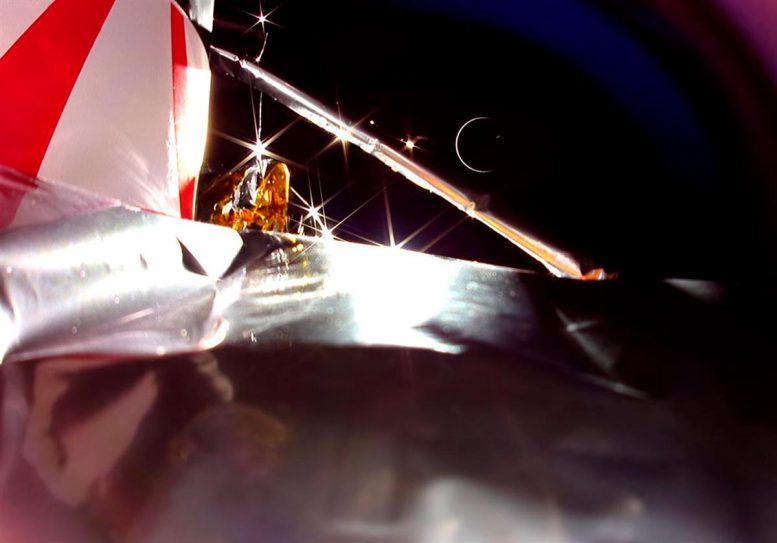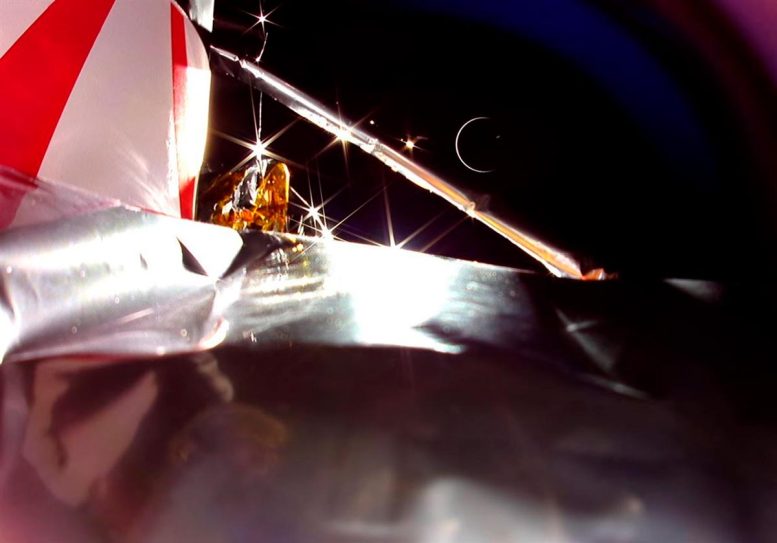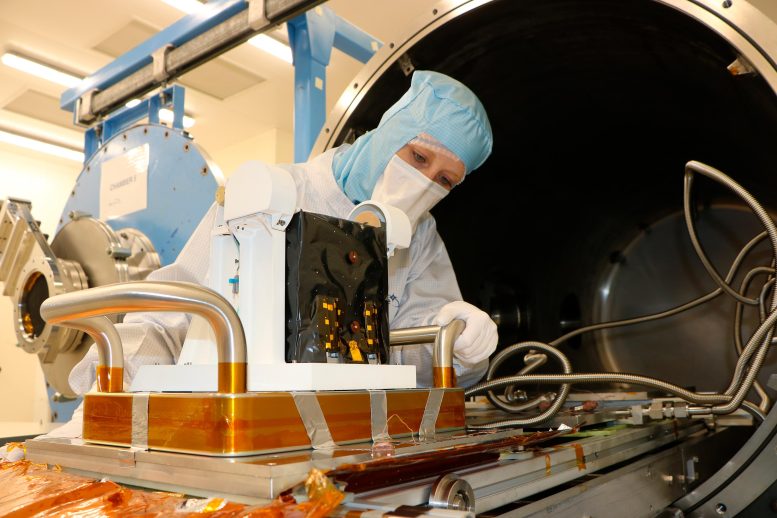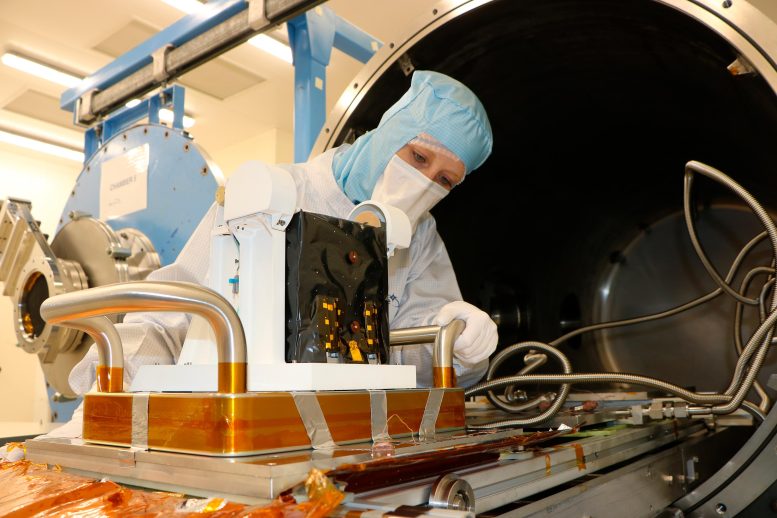

The Peregrine Lunar Lander developed a critical propellant leak shortly after leaving Earth. Credit: Astrobotic
The Peregrine Ion Trap Mass Spectrometer (PITMS) has returned to Earth after an eventful ten days in space, burning up on re-entry over the Pacific Ocean.
Developed at short notice by RAL Space, the Open University, and NASA’s Goddard Space Flight Center, the instrument was originally destined for the moon to determine the composition of the super-thin lunar atmosphere, but the mission ran into trouble shortly after leaving Earth, when a critical propellant leak was discovered on its lander.
In an ambitious mission of firsts, PITMS was riding aboard Astrobotic’s Peregrine Lunar Lander, the world’s first commercial lunar lander, having launched on the Vulcan Centaur rocket’s maiden voyage.
Despite not making it to the moon, the PITMS team said the mission was largely successful and achieved the majority of its goals, after they were able to turn the instrument on and demonstrate that it was fully functioning and operating as it would have on the lunar surface.
“We were able to power on our instrument and checked everything was functioning as it should,” said Roland Trautner, a project manager for PITMS at the European Space Agency (ESA), which funded the instrument. “We were very happy to see that the data confirmed our instrument is in good health, that it survived the launch and harsh conditions of space, and that the instrument could provide clean data.


PITMS completing testing at STFC RAL Space before being shipped to NASA. Credit: Open University, STFC RAL Space, NASA Goddard Space Flight Center
“We developed the spectrometer using a novel fast-track project management approach, delivering the payload in less than two years, which is twice as fast as typical payload development programs. We defined our success criteria such that what we have now achieved – delivering our instrument to NASA and the successful checkout of the instrument in orbit – constitutes 90% of our project’s success.”
Christopher Howe, Production and Software Group Leader at RAL Space, said: “The success of EMS is also a testament to the good collaboration between the space agencies, industry, and academia.
“The short development time would not have been possible without an efficient and trustful working relationship between those entities.”
The technology developed for PITMS will now be used on future space missions, including ENFYS, a spectrometer designed to be fitted to the Rosalind Franklin Mars Rover, due for launch in 2028.
PITMS represents a longstanding collaboration between RAL Space, the OU, and NASA GSFC, which aims to advance our understanding of the Moon. The important work conducted in the UK was supported by the UK Space Agency’s membership of the European Space Agency.
